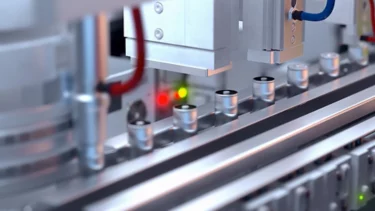
Lithium-ion battery production is surging at an alarming rate. To support the manufacturing capacity of the electric vehicle (EV) industry, battery demand is expected to reach 9.3 terawatt hours by 2030, an increase of more than 1,600 percent froms 2020.
Asia continues to lead the way in terms of capacity, with 38 new battery gigafactories planned for Europe and 13 in the US. More such plans are announced almost daily.
Bringing gigafactory online quickly is an urgent matter for electric car makers as they strive to keep battery supplies close to car production. Of course, it is also essential to consistently deliver quality products while minimizing capex and operating costs.
Pressing schedules, new challenges.
It's no exaggeration to say that every electric car is built around a battery pack, or battery. Despite advances in technology, battery packs still account for about 30% of a car's cost. Given the importance of this component, a battery supply disruption or a delay in the gigafactory commissioning could quickly disrupt ev production plans.
To meet market demand, manufacturers have sharply reduced the schedule of battery plants. There was a time when bringing the Gigafactory online in 24 months was seen as a time-crunched task. Now, manufacturers are trying to make that time even shorter.
Aggressive implementation plans are only part of the story. At the same time, manufacturers are increasingly faced with sustainability regulations that require responsible sourcing of raw materials throughout the battery life cycle, as well as compliance with CO2 emission regulations and traceability requirements.
End-to-end connectivity is achieved through MES
If you were part of the Gigafactory launch team, how would you meet regulatory requirements and successfully complete the launch?
One of the best ways to achieve this is through end-to-end connectivity and visibility through manufacturing execution Systems (MES). Gigafactory using MES and other smart connected technologies can drive operational excellence, meet compliance requirements and increase employee productivity.
In fact, we see MES as a cornerstone of the success of the Gigafactory.
The Connected Gigafactory Enabled by MES
The Connected Gigafactory Enabled by MES
Webinar
The Connected Gigafactory Enabled by MES
Join us to learn how to successfully launch your Gigafactory and understand how MES can help you meet demand through a production strategy to build growth.
Attend the Battery Gigafactory MES webinar
As a link between business systems and the plant floor, MES is responsible for integrating and sharing information to manage production orders and critical quality issues. Despite the complexity of battery production, MES can create a digital pedigree for each battery and then track and trace it from raw materials to electrodes, battery assembly and activation.
Of course, many people see MES as a means of ensuring compliance with established manufacturing processes and rules. This is also true. But at the same time, MES can improve employee productivity by integrating analytics and digital vision support tools, such as augmented reality (AR).
When used in conjunction with modeling and simulation tools for offline testing of "what-if" production scenarios, MES can demonstrate extraordinary flexibility.
Identify MES functional requirements as the first step in action
For the implementation of MES on schedule, how do you start? Typically, clients we work with will request an MES quote and provide a document listing the desired goals. While useful, such documentation rarely gives us or any other MES vendor the specific information we need to recommend the most practical solutions.
In order to guide our customers to success on this path, we need them to clearly answer operational questions such as:
What are your specific plans for implementing order creation?
How do you define the scope of product Life Cycle Management (PLM) and MES?
What do you think of "quality management" and how do you implement it?
What is your preferred deployment method? Cloud deployment, on-premise deployment, or hybrid deployment?
We have found that one of the best ways to gather this information is the Functional Requirements Specification (FRS) workshop. The earlier the workshop takes place, the better it can define MES, iot, and network and infrastructure requirements.
Impact on the procurement cycle
As we all know, gigafactory on-time production often depends on equipment suppliers meeting tight procurement deadlines. This is why it is important to involve machine and production line manufacturers as early as possible in the MES requirements definition phase.
The "quick start" procurement process is a good option, especially given the ongoing supply chain problems and huge equipment backlogs at key suppliers. But doing so could lead to major problems affecting production, especially during trial runs.
For example, without clearly defined MES requirements, you run the risk of receiving systems that lack online quality testing capabilities, manufacturing networks on production lines that inhibit normal data flow, machine logic that does not include key parameters needed to run AN MES system, and so on. While there are quick fixes to these problems, they will take a lot of time and cost.
01-18
202206-23
202206-23
202203-15
202203-15
2022